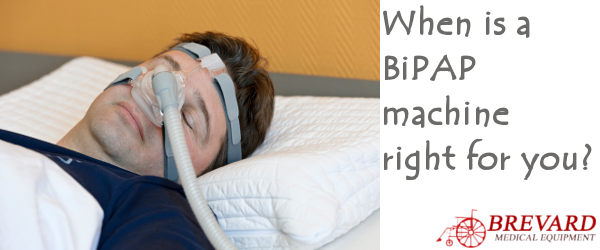You’ve been using your CPAP machine for a while now, and it just doesn’t seem to be working out. You’ve switched out masks, you’ve adjusted the setting, and you started using a humidifier, and still you can’t fall asleep while wearing it.
This is not an unfamiliar plight to many CPAP users, and it contributes to a high rate of non-compliance. However, it might not be you—it might be the machine. And the good news is, CPAP is not the only thing that can treat sleep apnea.
The treatment we will focus on today is Bi-Level Positive Airway Pressure, or BiPAP.
BiPAP machines are ideal for those who need to use higher air pressure to treat their sleep apnea. One of the things that keeps people from falling asleep while using a CPAP is the constant pressure. A BiPAP machine has two pressure settings: one for when you inhale and one for when you exhale. They’re known as IPAP and EPAP
- IPAP stands for inspiratory positive airway pressure. When you inhale, the machine goes into this mode and pushes a higher level of air through your throat.
- EPAP stands for expiratory positive airway pressure. When you exhale, the BiPAP machine goes into EPAP mode and gives a lower level of pressure.
This constant relief of pressure makes it much easier for those living with sleep apnea to fall asleep. It can also be ideal for those who are living with another type of respiratory condition or with congestive heart failure.
When you get your BiPAP machine, you may notice that it looks a lot like a CPAP machine. Both use masks, tubes and headgear. However, the functionality differences can be the deciding factor in how well you sleep. Brevard Medical carries BiPAP supplies in our online catalog. Be sure to talk to a physician or respiratory therapist before you change your treatment options.




Recent Comments